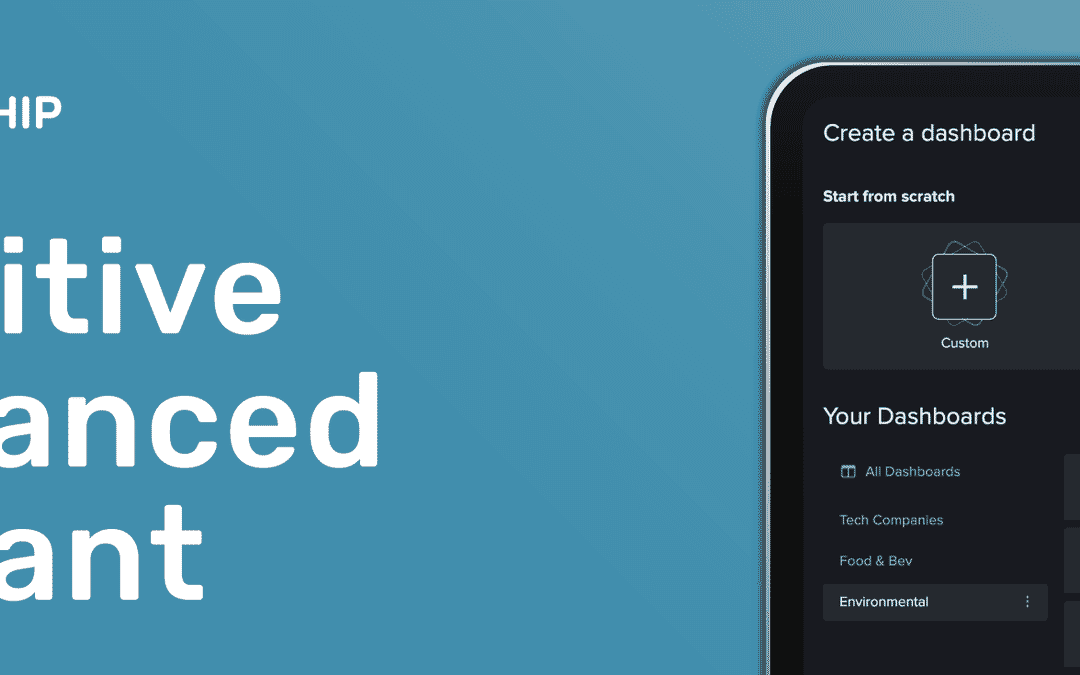We know the importance of having a presence on social media, but how have brands in the food and beverage industry leveraged social media, as opposed to traditional marketing methods, to connect with audiences for product releases?
Last month, Kellogg’s newly released White Chocolate Coco Pops picked up a lot of traction on social. The new cereal hit shelves on Jun 17th, but someone tweeted at the brand nearly three years prior, imagining how good that flavor would taste. They put money behind promoting the original tweet as its primary marketing strategy, and hoped it would resurface in users’ feeds. Other tweets requesting the cereal went as far back as 2012 were also resurfaced and retweeted by Kellogg’s.
2019 Kellogg’s Engagements to Earned Media

They let Twitter run wild, assuming what they wanted about whether they were actually going to release the cereal, which generated a significant spike in earned engagement, almost as much as their limited-edition Mermaid Fruit Loops, released earlier this year. Thanks to food publisher Delish.com, they received over 213k engagements for coverage of that release, and 189k on their organic push for White Chocolate Coco Pops.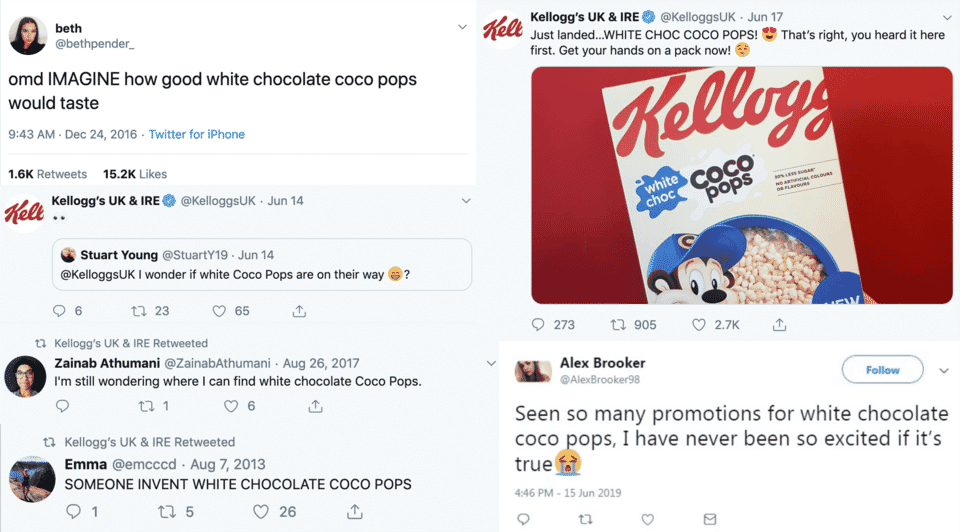
Kellogg’s usually approaches campaigns traditionally, this being their first significant foray into social media as a standalone marketing tool. It remains to be seen whether they will continue to utilize this method of new product releases, but they’ve outpaced last year’s numbers considerably. Their most engaged story of 2018 was the heat of a crisis involving one of their cereals and a salmonella outbreak.
2018 Kellogg’s Engagements to Earned Media
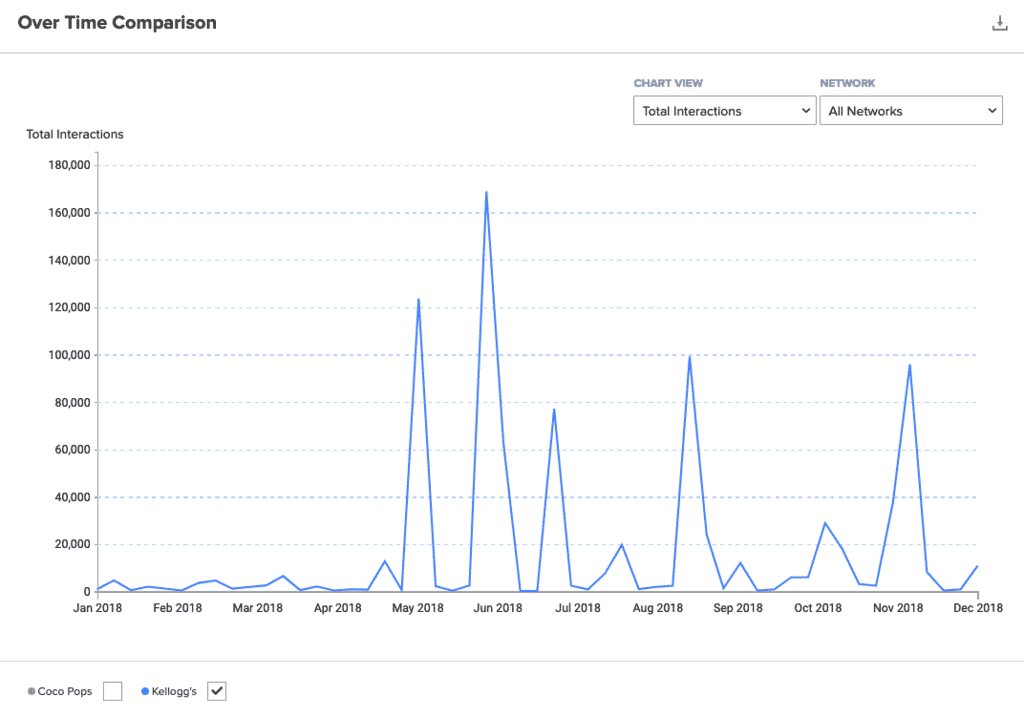
We’ve seen successful influencer marketing with industries like beauty/cosmetics and even branching out into video games, but this year’s strategy has driven more earned media for Kellogg’s than years prior, and follows a trend of other food and beverage companies leaning in to influencer marketing more generally.
At a content marketing summit we attended earlier this year, many companies reported a renewed focus on tapping into micro influencers, attempting to hone in on smaller, but highly engaged audiences.
Malibu Rum for example, recently released a series of videos with 32 influencers, for their “The Malibu Games” campaign, all because last year’s influencer campaign brought in 5.4m engagements, 155m video views, and 2.1m website visits in 2018. Tapping into influencer’s audiences and providing original, summer-y content has become a recipe for success as well as partnering with other companies to generate hype for new products.
We can’t talk about food companies on social without mentioning fast-food chain Wendy’s. Their social media strategy and no holds barred approach to roasting their competition has not only made them a fan favorite, but has earned them more than 3.3 million followers on Twitter. Their first real foray into roasting people on Twitter happened back in 2017, and a simple question asking for a year’s worth of free chicken nuggets became one of the most retweeted tweets of all time.
2017 Wendy’s Engagements to Earned Media
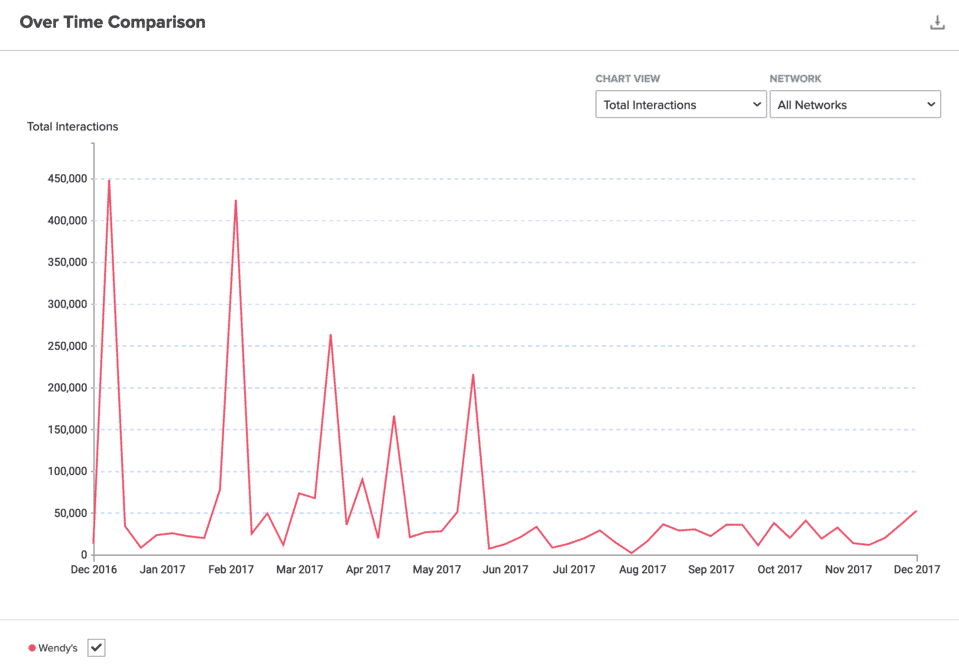
Kurt Kane, now President and Chief Commercial Officer of Wendy’s, started as the Chief Marketing Officer and gave some insight into how they think about social.
First, they have a desired tone that guides how they respond: “We want to be likable and sassy. We don’t want to be seen as sarcastic and rude. But we walk a fine line. Sometimes we get it wrong in tone.”
Admittedly, giving free reign to the social team also means sometimes being surprised at what is tweeted said Kane, but the casual handling of a platform like Twitter is a gamble that has paid off ten-fold for Wendy’s. Social listening for them fuels their TV commercials and really sets the tone for how they market and spend on digital ads. Learning what resonates with their audience and responding in kind is what has set them apart from their competition.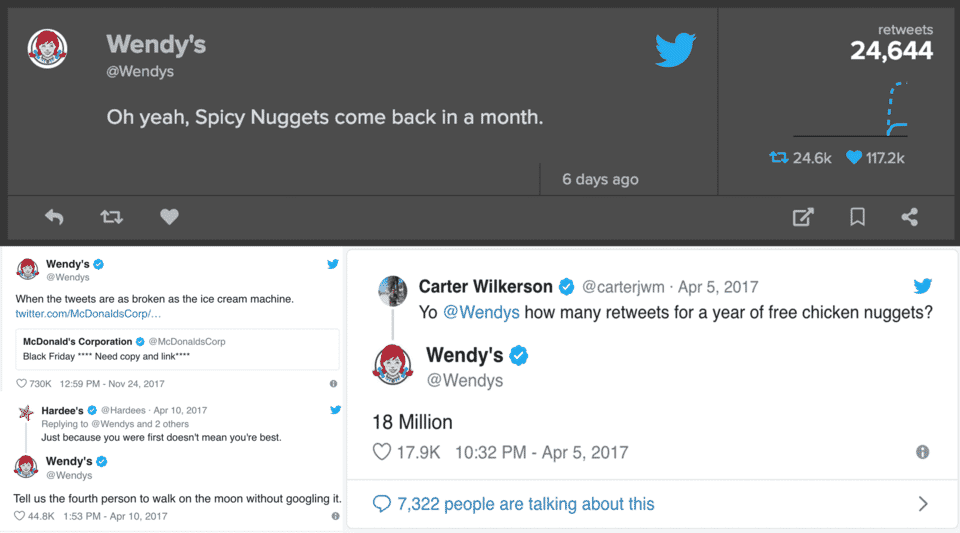
While not everyone can pull off the same strategy as Wendy’s, there are a few simple ways companies can approach social ahead of a new product launch:
- Listen to your audience. Find out where they are and understand the broader conversations happening around your brand.
- Identify which platforms to focus on during the campaign. Don’t promote posts on a platform where your audience doesn’t talk about you. Think outside of the first places that come to mind (i.e. Chipotle chose to host an “Ask me Anything” on Reddit and now has a page where they regularly interact with customers)
- Consider working with influencers who are dialed into communities you’re trying to reach out to. Forget the influencers with the largest following, after understanding what your audience cares about, find those who are connected to them, and partner with them to create original content that speaks to customers you’re trying to reach.
- Reevaluate after every campaign. Keep track of how your content is performing and adjust accordingly. Wendy’s didn’t stop at one viral tweet, they continue to interact with their customers and constantly give them other content to talk about.
If you need help monitoring your brand or want to see how you stack up with the competition, check out NewsWhip Analytics.








